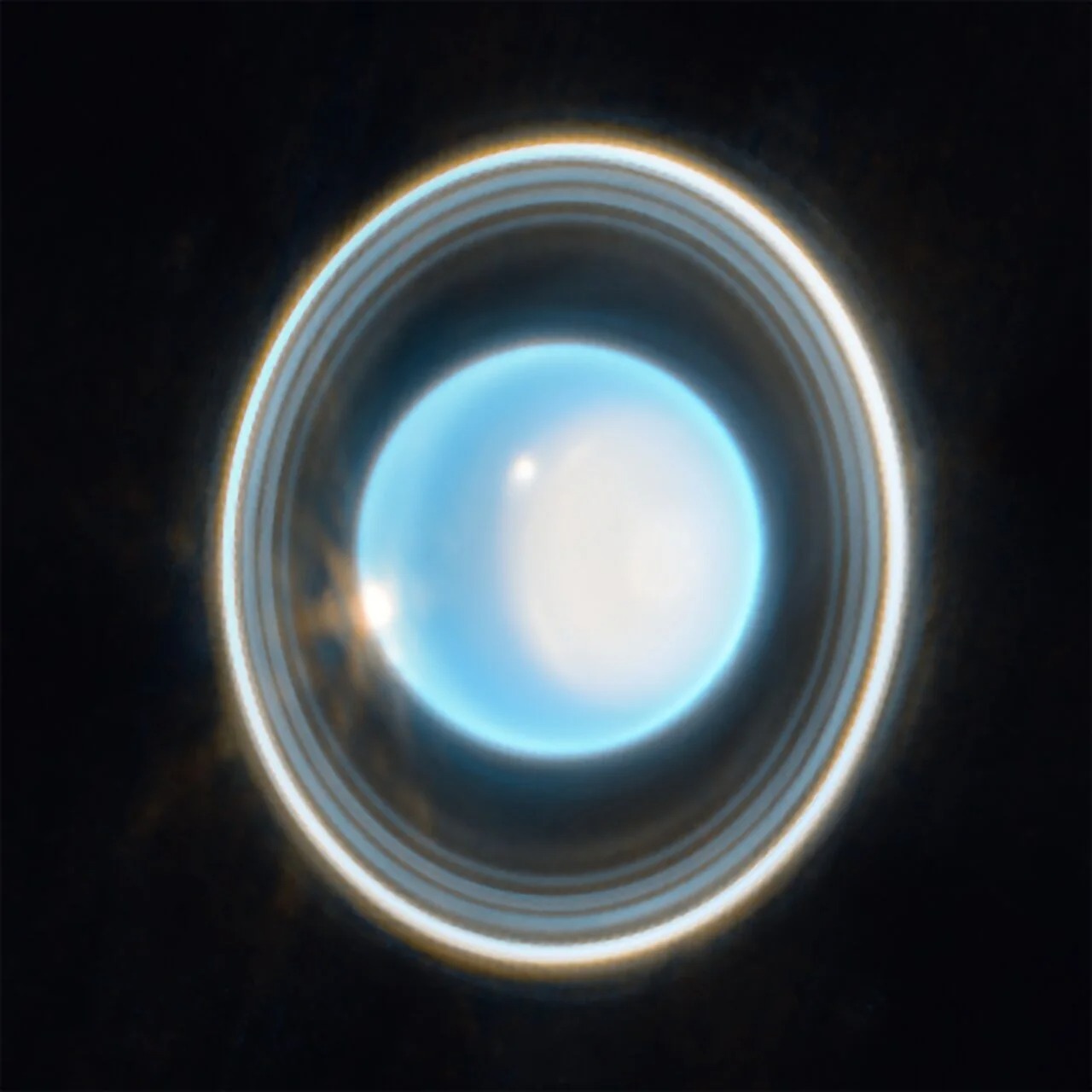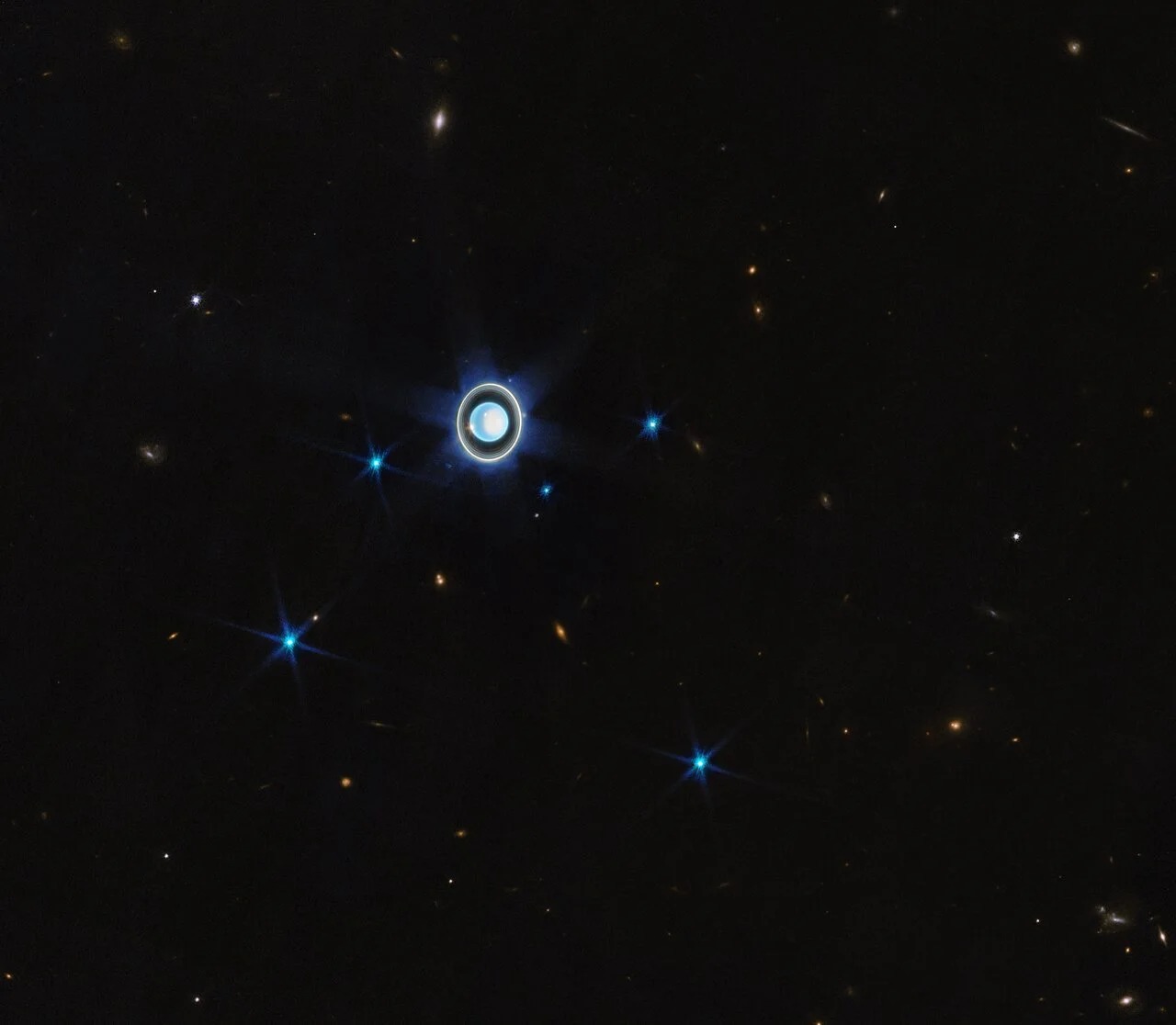The James Webb Space Telescope is usually used to look into the deepest corners of the Universe, where it can view the most distant galaxies formed shortly after the Big Bang. But sometimes the observatory is sent to targets a little closer to home. Exploring images of Jupiter published last year, astronomers with the help of James Webb have published a completely new image of Uranus, which you have never seen before.

Uranus has some unusual features compared to other planets in our Solar System, as the planet is almost completely tilted on its side. If we compare the planet with the orbital plane in which the planets of the Solar System are located, the axis of Uranus is at an angle of 98 degrees. This means that during the northern summer, the sun shines directly on its north pole and never sets. Researchers believe that such an extreme tilt may be due to a massive body that has touched the planet in the distant past and turned it on its side.
This tilt means that when James Webb looks at Uranus, it sees its polar cap – a white spot to the right of the planet in the image, which is visible in summer, but disappears in autumn. Looking at this cap with the telescope’s sensitive instruments, astronomers were able to see a brighter area in the center of the cap that had not been noticed before, and other elements, such as two bright clouds associated with storm activity, were also visible.

Uranus has 13 known rings, 11 of which are visible in the photo. These rings consist of dust dotted with small moons, and are considered relatively young compared to the planet. Although the small moons within the rings are too faint to be seen, the six more distant moons of the planet are visible in the panoramic image of the planet.
Earlier we reported about the temperature on Uranus.
According to NASA
Follow us on Twitter to get the most interesting space news in time
https://twitter.com/ust_magazine

